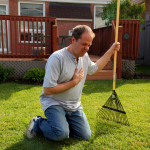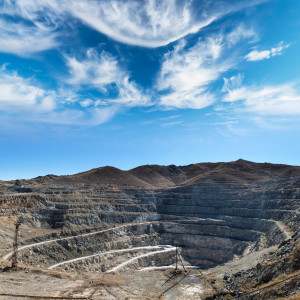Heart attacks occur suddenly, usually without warning, and could happen to nearly a million Americans this year. Conventional wisdom says a heart attack occurs when a blockage, in one of four major coronary arteries, prevents blood flow to the heart and it begins to die. But consider this, heart attacks are a lifestyle disease and they are preventable.
According to Thomas S. Cowan, MD, arteries that are more than 90 percent blocked are compensated by a collateral blood supply. Our bodies can produce their own natural “bypass”. Therefore, Dr. Cowan believes heart attacks occur without disruption to blood flow. He suggests heart attacks are a result of chronic stress and keeping stress under control is the key to heart attack prevention.
“A study from Brown University examined whether having something called “dispositional mindfulness”—which they define as being very aware and attentive to what you’re thinking and feeling at any given moment—is important for heart health.” They concluded that individuals, with high mindfulness scores, will be more in tune with their bodies and make the appropriate lifestyle changes.
Another arrow, in the prevention quiver, is mindful meditation (a powerful stress-management tool) which can be done in as little as 5 minutes by focusing on breath. This can also help reduce your heart attack risk.
Diets high in refined sugars and processed carbohydrates are another contributor as they create insulin spikes (i.e. drop the Twinkie). If these spikes happen frequently then they damage the arterial walls setting up a condition for inflammation, insulin resistance, and eventually obesity and diabetes. Diabetes increases the risk for heart disease. Eliminating corn-based sweeteners, highly processed foods, artificial sweeteners, allergenic foods like those containing gluten, and rebalancing our omega-6 to omega-3 ratio from a high of 50:1 down to 1:1 or 5:1 will reduce the risk for heart attack. Try wild salmon from Alaska as it is a great source of omega-3 fats.
As a society, we have become so sick, weak, and broken, that we accept the abnormal as normal
– Robb Wolf
Thirty-five percent of the population is now considered obese as compared to 13%, 50 years ago. We are spending more time sitting at a desk, in a car, watching TV, or in front of a computer. This sedentary lifestyle coupled with increased caloric intake creates a condition for more health issues. A University of Washington study “found that people gain an average of 16 pounds within eight months of working at a job that consists of mainly sitting at a desk. People who have jobs that require standing up a lot tend to burn 50 percent more calories while on the clock than those who sit.” It’s important to find ways to increase your time for movement. “Short bursts of intense activity are safer and more effective than conventional cardio – for your heart, general health, weight, and overall fitness.” “Excessive Sitting Raises Your Cardiac Risk – Even if You Go to the Gym”
Dr. Michael Holick, who has researched the relationship between sunlight and our bodies for more than three decades has this to say, “vitamin D deficiency can increase your risk of heart attack by 50 percent, and if you have a heart attack while you’re vitamin D deficient, your odds of dying from that heart attack creeps up toward 100 percent.” Your best source of vitamin D comes from exposing your skin to sunlight without burning so that your body can convert cholesterol into vitamin D. Sunscreens will prevent absorption of the sun’s rays and interfere with the conversion process so sun without the sunscreen but be careful not to burn. If you are planning to be outdoors for an extended stay, then do apply a nontoxic sunscreen. Recommendations can be found here on EWG’s website. A vitamin D3 supplement can be taken as well with a blood test recommended every three months.
The “Warfarin/Aspirin Study in Heart Failure” showed that fatal heart attacks were not reduced by taking aspirin daily. Several studies showed that gastric hemorrhaging and ulcers were produced by taking low doses of aspirin. In addition, hemorrhagic brain strokes, kidney and liver problems, pancreatic cancer, and blindness have also manifested with this prescription.
In 2011, two studies published in the Journal of the American Medical Association reported that “diets low in salt may actually increase the risk of fatal heart attack and stroke. And the lower the salt intake, the greater the risk.” “The findings showed the lowest risk for death was in those consuming between 4,000 and 6,000 mgs of salt per day.” Dr. Michael Alderman, from the Albert Einstein School of Medicine “has long noted that eating less salt increases insulin resistance that in turn can increase cardiovascular risk and the risk of other degenerative diseases.” Unrefined sea salt is the best form of salt for consumption and support of the body.
Individuals who take proton pump inhibitors (PPIs) like Prilosec or Prevacid for acid reflux suffer a 20 percent increased risk of heart attacks. Lead researcher and heart attack surgeon Dr. Nicholas Leeper states, “This is potentially a big deal from a public health perspective.” The researchers recommend you speak with your doctor before stopping your PPI drug prescription.
Cardiologist Stephen T. Sinatra shares the benefits of grounding for heart health and vitality in the coauthored book entitled Earthing: The Most Important Health Discovery Ever? “When you walk barefoot, free electrons are transferred from the earth into your body, and this grounding effect is one of the most potent antioxidants known.” “Grounding is a powerful way to reduce inflammation throughout your body.” Proper grounding occurs on surfaces such as bare dirt, sand, grass and untreated concrete or brick. Rubber-soled shoes disconnect you from the earth, but leather-soled shoes allows the electron transfer to occur.
By following these 8 recommendations, you will greatly reduce your risk of becoming one of the nearly one million victims of a preventable heart attack each year. If not for yourself, then consider the people you leave behind.
Click here to review post references.
Click here to watch a trailer for The Widowmaker – a film about a conspiracy of silence around that most vulnerable of human organs – the heart.
Click here to watch The Miracle on Venice Muscle Beach – an interview with a man who has survived two strokes and a heart attack.
Click here to watch a video preview clip for $TATIN NATION II.
Click here to watch The Blood Pressure Solution – The #1 lie about blood pressure medication.
For my next post, we will compare and contrast farm raised salmon to wild salmon.
If you would like to share your comments about this post, then please contact me at myorigins@kenpledger.com or leave a comment below.
Follow me on Twitter: Ken Pledger@KenPledger to view new information or participate in discussions that are relative to the topics on this website.
If you found the information helpful, please share with your friends and family.




